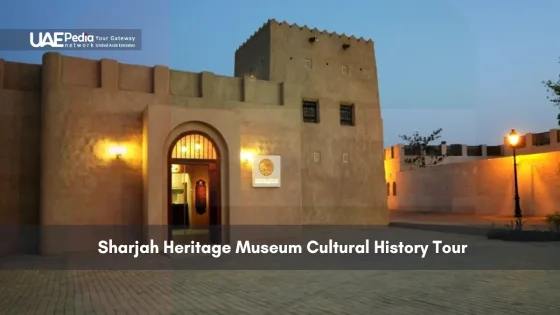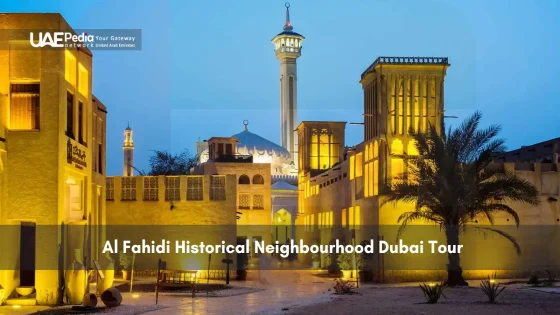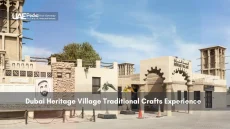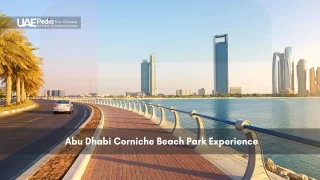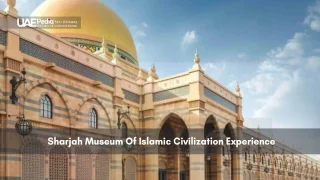Did you know the world’s largest frame isn’t hanging in a gallery but towering over a desert metropolis? This architectural wonder—part museum, part observatory—lets you literally step through time, with one side revealing centuries-old neighborhoods and the other gleaming skyscrapers.
Located in a sprawling green oasis, this iconic landmark bridges past and future. Glass-floored walkways hover 150 meters above ground, offering dizzying perspectives of the United Arab Emirates’ evolution. Below, interactive exhibits unpack Bedouin traditions and urban innovation.
We’ve explored every corner to craft your ultimate guide. Whether you’re snapping golden-hour photos or planning a family outing, we’ll share how to avoid crowds, snag discounts, and spot hidden details most miss. You’ll leave knowing why this isn’t just a photo stop—it’s a cultural conversation starter.
Key takeaways:
- Discover insider strategies for experiencing both historic and modern exhibits
- Learn time-saving tips for tickets, transportation, and peak-hour navigation
- Uncover the best vantage points for capturing skyline contrasts
Exploring the Legacy of Dubai Frame and Zabeel Park
What began as a sketch in Mexico City became a cultural bridge in the Arabian Desert. Architect Fernando Donis won a 2009 global competition with his “empty frame” concept—a bold proposal to physically connect heritage districts with futuristic skylines. His original name, Al Berwaz Tower, hinted at traditional watchtowers before evolving into today’s symbolic structure.
Historical Background and Concept
Hyder Consulting transformed Donis’ vision into reality using 9,900 cubic meters of concrete and 2,000 tons of steel. But the journey wasn’t smooth. Legal disputes over intellectual property rights surfaced post-construction, sparking debates about architectural ownership. These tensions highlight how groundbreaking designs often face growing pains.
From Blueprint to Cultural Compass
The building’s dual purpose reveals its genius. Walk through ground-floor galleries detailing pearl diving and Bedouin life, then ascend to sky bridges revealing the metropolis’ tech-driven present. One visitor whispered, “It’s like holding a history book in one hand and a crystal ball in the other.”
This landmark doesn’t just display information—it starts conversations. By framing contrasting cityscapes, it invites reflection on progress while honoring roots. Every rivet tells a story of ambition, from the design battle to its current role as a must-see stop for understanding the region’s soul.
An In-Depth Look at the Architecture and Design
Architectural marvels often hide their secrets in plain sight. This landmark’s blueprint whispers ancient mathematical truths—specifically, the golden rectangle ratio used by Da Vinci and Euclid—to create its striking silhouette. Let’s unpack how form meets function in this gravity-defying feat.
Innovative Structural Concepts and Materials
Over 2,000 tons of steel and 12,000 square meters of glass form the skeleton of this 150-meter-tall giant. Engineers faced a unique challenge: crafting a hollow structure sturdy enough to withstand desert winds while maintaining crystal-clear vistas. The solution? Reinforced concrete cores act as anchors, supporting cantilevered walkways that float like transparent ribbons.
| Material | Purpose |
|---|---|
| Laminated Glass | Uninterrupted views + UV protection |
| Galvanized Steel | Wind resistance framework |
| Anodized Aluminum | Reflective exterior panels |
| High-Strength Concrete | Foundation stability |
The Role of the Golden Rectangle in Design
Every curve and angle follows the 1:1.618 ratio found in seashells and galaxies. This mathematical harmony creates optical balance—wide enough to frame entire neighborhoods, yet proportioned to feel inviting rather than overwhelming. “We wanted visitors to sense perfection instinctively,” reveals a lead designer from Hyder Consulting.
“The golden ratio isn’t just math—it’s the language of beauty across civilizations.”
This marriage of ancient geometry and space-age materials achieves more than aesthetics. It physically connects heritage districts to innovation zones, making abstract concepts of progress tangible. Next time you visit, trace the lines—you’re literally walking through a equation that’s shaped human creativity for millennia.
dubai frame zabeel park view: Bridging Past and Present
Two worlds unfold through 150 meters of steel and glass. This architectural marvel acts as a visual translator, decoding the city’s layered identity through carefully framed panoramas. We love how it turns sightseeing into time travel—no DeLorean required.
Panoramic Perspectives of Old and Modern Dubai
Face north through the golden rectangle, and wind towers from Al Fahidi district pierce the horizon like ancient sentinels. Swing south, and Burj Khalifa’s needle-thin silhouette stitches earth to cloud. The genius? Each glass panel acts as a museum label, contextualizing what you see.
Here’s why this duality matters:
- Historical anchors: Spot fishing dhows bobbing near Creek waters—the same vessels that fueled trade routes centuries ago
- Future foreshadowing: Count construction cranes reshaping the skyline even as you watch
- Design magic: Notice how the structure’s edges crop views into living postcards
One regular visitor put it perfectly: “It’s not just about old versus new—it’s seeing how they lean on each other.” Modern towers borrow patterns from traditional mashrabiya screens, while heritage sites integrate solar tech. The Frame doesn’t just show contrasts—it reveals conversations.
Stand centered on the glass walkway, and feel the city’s pulse beneath your feet. To your left, incense wafts from spice souks. To your right, driverless pods glide between mirrored towers. This isn’t just a viewpoint—it’s where timelines hold hands.
Planning Your Visit to the Dubai Frame and Zabeel Park
Imagine a landmark where your ticket doubles as a time machine—welcome to the ultimate urban adventure. Let’s crack the code for seamless exploring, from snagging passes to dodging crowds like a pro.
Ticket Hacks and Golden Hours
General admission starts at AED 50 ($13.60), with family bundles saving you 20%. Book online to skip queues—they cap entries at 200 people hourly. Early birds (8-10 AM) get mirror-like reflections on the glass walkway. Sunset seekers arrive by 4:30 PM for that golden-hour glow without the midday glare.
Navigate Like a Local
Hop off at Al Jafiliya metro station—it’s a 12-minute stroll through shaded paths to Gate 4, the closest park entrance. Drivers: aim for Lot C near the splash pad. Pro tip? Wednesdays see 40% fewer guests than weekends.
- Beat the heat: Free shuttles run between major exhibits June-August
- Stroller alert: Elevators bypass the 50-step climb to the observation deck
- Hidden perk: Show your ticket stub for 15% off at three park cafes
One regular whispered, “Come thirsty—the water stations are cleverly disguised as art installations.” Whether you’re squeezing this into a layover or making it a centerpiece, these strategies turn logistics into part of the fun.
Inside Dubai Frame: Exhibits, Elevators, and Immersive Experiences
What does innovation feel like underfoot? Step into the structure’s belly, where floor-to-ceiling projections transform walkways into time portals. The journey begins with augmented reality sand—drag your palm to reveal pearl divers emerging from digital dunes.
Interactive Exhibits: Past, Present, and Future
Touchscreens react like liquid mercury here. Swipe through holographic marketplaces where 19th-century traders barter spices. Then watch data streams cascade down walls, mapping the city’s tech-driven metamorphosis. One guest laughed, “It’s like Tron meets Aladdin!”
Don’t miss the Future Zone. Motion sensors trigger 3D projections of floating eco-cities and hyperloop networks. Kids love “design your skyscraper” stations—their creations briefly join the digital skyline.
Experience the Sky Deck and Glass-Floor Thrill
Glass-walled elevators rocket upward at 10 meters per second—faster than a skydiver’s freefall. At 150 meters, doors open onto a transparent walkway. Peer down through 48 laminated panels to ant-sized cars zipping below.
Regulars whisper a secret: stand where the golden ratio lines intersect. Suddenly, Burj Khalifa aligns perfectly with wind towers across the Creek. It’s geometry magic made visible.
Pro tip? Visit post-sunset. The deck’s edge LEDs create a halo effect, making your photos glow. Just breathe deep—that flutter in your stomach isn’t height. It’s history colliding with tomorrow.
Comparing Dubai Frame with Other Dubai Landmarks
In a city where skyscrapers duel for attention, this golden portal carves its niche. While the Burj Khalifa dominates height charts, the Dubai Frame redefines perspective—literally. Think of it as choosing between climbing a mountain or holding the perfect postcard.
Height, Cost, and Visitor Experience
Let’s crunch numbers. The Burj’s 828 meters dwarf the Frame’s 150-meter stature, but here’s the twist: one lets you touch the sky, the other frames it. Entry costs tell their own story—families can explore the Frame for less than a single Burj observation deck ticket.
| Feature | Dubai Frame | Burj Khalifa |
|---|---|---|
| Adult Ticket | $13.60 | $46+ |
| Elevator Speed | 10 m/s | 10 m/s (faster options) |
| Unique Edge | Interactive history exhibits | World’s highest observation deck |
Glass elevators in both landmarks deliver heart-racing ascents. But where the Burj stuns with altitude, the Frame enchants with context. Its walkways transform skyscrapers into living art, bordered by the structure’s golden ratio design.
Budget-conscious travelers often prefer this experience. As one parent noted: “Our kids designed virtual cities in the Future Zone while we soaked in views—everyone left grinning without wallet guilt.”
Both icons dazzle, but in different dialects. The Frame whispers stories through curated vistas, while the Burj shouts superlatives. Your choice? A framed masterpiece or the thrill of touching the stratosphere.
Practical Travel Tips for Zabeel Park and Beyond
Ever wondered how locals glide through the metropolis’ attractions without breaking a sweat? Let’s turn you into a navigation ninja with these tested strategies.
Maximizing Your Day in Dubai
Start at Al Jafiliya metro station—the golden ticket to stress-free exploring. From there, Gate 4 sits just 800 meters west via shaded pathways. Early risers (6:30-8 AM) snag two bonuses: cooler temps and Instagram-worthy morning light on the Frame’s golden exterior.
| Transport Option | Time | Perk |
|---|---|---|
| Metro + Walk | 15 mins | Free park entry |
| Taxi | 8 mins | Direct to Gate 4 |
| Hop-On Bus | 25 mins | 5 nearby stops |
One savvy traveler shared: “Wednesday mornings feel like having the city to yourself—even the coffee lines are shorter.” Pair your Frame visit with these nearby gems:
- Al Seef’s waterfront souk (12-minute drive)
- Museum of the Future (one metro stop south)
- Sunset yoga at Burj Park
Pro tip? Grab a Nol Card at any station. This rechargeable pass works on trains, buses, and even parking—saving you from fumbling with cash. Time your return trip after 7 PM to see the landmark illuminated, transforming into a glowing portal against the night sky.
Parting Insights for an Unforgettable Dubai Adventure
Every great journey deserves a finale that lingers—a moment where past whispers meet future visions. This architectural landmark delivers exactly that, blending interactive exhibits with sky-high thrills. Walk its glass pathways, and you’re not just sightseeing. You’re time-traveling through the story of a nation.
The structure’s genius lies in its dual personality. Below, touchscreens resurrect pearl divers and spice traders. Above, 150-meter vistas reveal tomorrow’s skyline taking shape. One visitor grinned: “It’s like stepping into a sci-fi novel where history gets the last word.”
For families craving adventure, this experience offers more than photo ops. Kids design virtual cities while adults decode golden ratios in the architecture. Book weekday mornings for thinner crowds, and don’t skip the Future Zone’s holographic eco-cities.
As twilight paints the sky, remember: this isn’t just a landmark. It’s a bridge between eras, proving progress needn’t erase heritage. Let it spark your curiosity to explore beyond the expected—because in this corner of the United Arab Emirates, every view tells two stories at once.
Adult tickets start at 50 AED (.60), while kids under 3 enter free. Discounts apply for seniors and students – bring ID! Pro tip: Book online to skip queues, especially during sunset hours when crowds peak.
Al Jafiliya Metro Station (Red Line) is a 12-minute walk from Gate 4. For a quicker route, grab a taxi from the station – fares rarely exceed 15 AED (). Parking? Gate 2 offers shaded spots near the landmark.
Absolutely! The reinforced glass withstands 10x its weight load. Tiny toes might tingle at first, but even toddlers love spotting toy-sized cars 150 meters below. Strollers? Fold them before entering elevators.
Think of them as cousins, not rivals. Burj Khalifa pierces clouds at 828m, while Frame’s 150m Sky Deck frames both historic neighborhoods and futuristic skylines. Best combo? Visit Frame first for context, then Burj for dizzying heights.
Sorry, drone fans – UAE aviation laws restrict flights near landmarks. But your smartphone will shine! Golden hour (4-6 PM) bathes the Frame’s gold cladding in magic light. Pro angle: Shoot from the park’s fountain area.
Yes! Rent bikes near Gate 1 post-Frame visit, or picnic under palms facing the structure. Families love the park’s playgrounds and BBQ zones – grab karak chai from kiosks for the full Emirati park-day vibe.
Most spend 60-90 minutes exploring exhibits, Sky Deck, and gift shop. Add 30 minutes if you linger over augmented reality displays showing 1970s Dubai vs. 2071 future projections. Arrive early – last entry’s at 6:30 PM.
Fully! Elevators whisk visitors from the lobby to exhibits and Sky Deck. Service animals welcome. Need assistance? Staff in white kanduras (traditional attire) are trained to help – just say “marhaba” (hello) and ask.
The LED-lit structure becomes a glowing portal after dark! Night views reveal Sheikh Zayed Road’s neon arteries and Burj Khalifa’s light shows. Bonus: Evening desert breezes make summer visits more comfortable.


